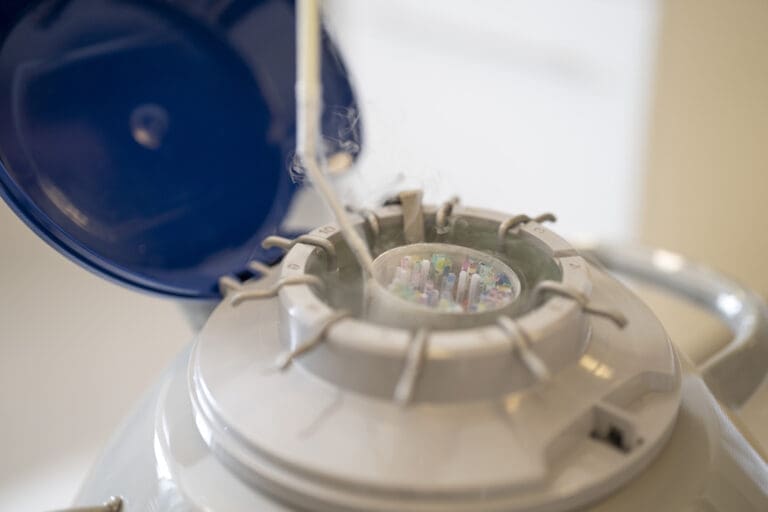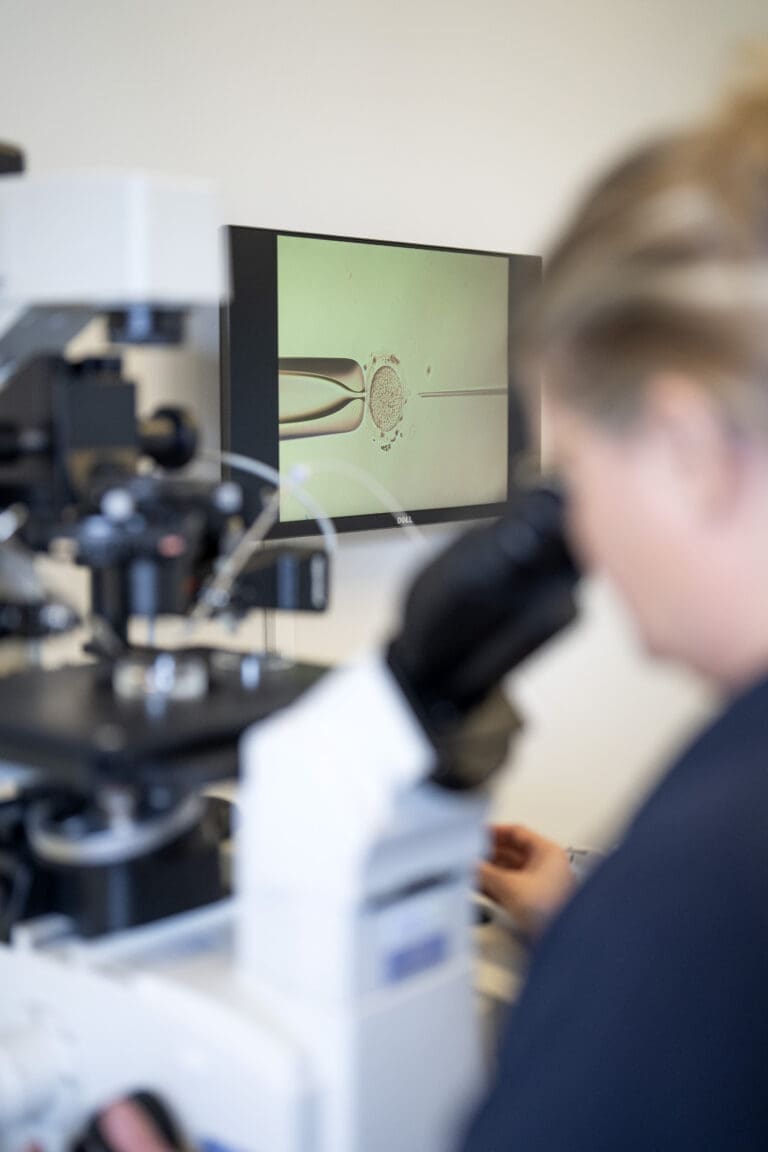
What is ICSI?
ICSI = Intra Cytoplasmic Sperm Injection
Microinsemination/ICSI is often a successful treatment for couples, when the man has a reduced sperm count or no sperm in the seminal fluid (ejaculate). It is also used when normal fertilisation does not occur with regular IVF treatment, even if there is a normal sperm count.
ICSI has revolutionised the treatment of male infertility, making treatment possible when there are very few sperm available.

ICSI is recommended when:
- The man has low sperm quality.
- There is a fertilisation failure or an unexpectedly low fertilisation rate of the eggs after regular IVF treatment.
- The man has been sterilised or there are other reasons why there are no sperm cells in the ejaculate (seminal fluid), but sperm cells have been found in a testiscular biopsy.
- There are challenges with getting an erection and making a sperm sample. This includes men with spinal cord injuries, diabetes and other conditions.

How ICSI treatment is performed
Instead of the sperm cell swimming in and fertilising the egg, the sperm cell is selected in the laboratory and injected with a thin needle into the egg. The sperm cell is carefully selected based on its appearance (morphology), swimming ability and speed. As only one sperm cell is needed per egg, a very small number of sperm cells can be used.
Normally, at least 150,000 sperm cells are needed to fertilise an egg in regular IVF treatment, but in ICSI treatment only one sperm cell is needed per egg. We also see in some cases that eggs will not be fertilised even if donor sperm is used, but that normal fertilisation occurs if ICSI is used on these eggs. In this case, we suspect that there is a defect in the eggshell or in the egg itself, which means that normal fertilisation does not occur.

A safe treatment
It should be emphasised that there are no reported risks associated with microinsemination/ICSI. Large follow-up studies have been conducted on children conceived using the ICSI method. There has been no increased number of chromosomal defects or malformations in these children.
 Phone. +45 76 24 50 20
Phone. +45 76 24 50 20  info@ivf-syd.dk
info@ivf-syd.dk 